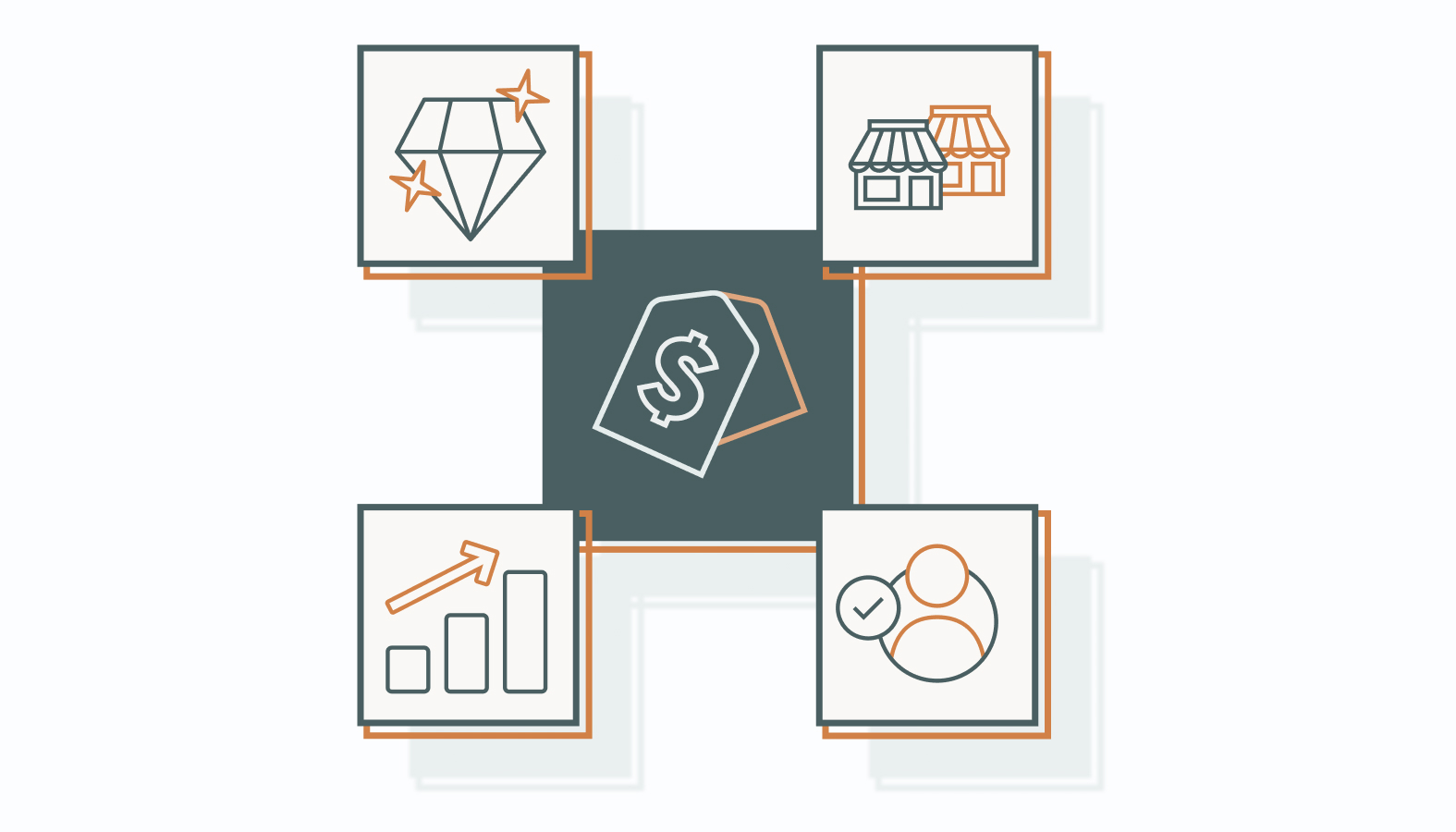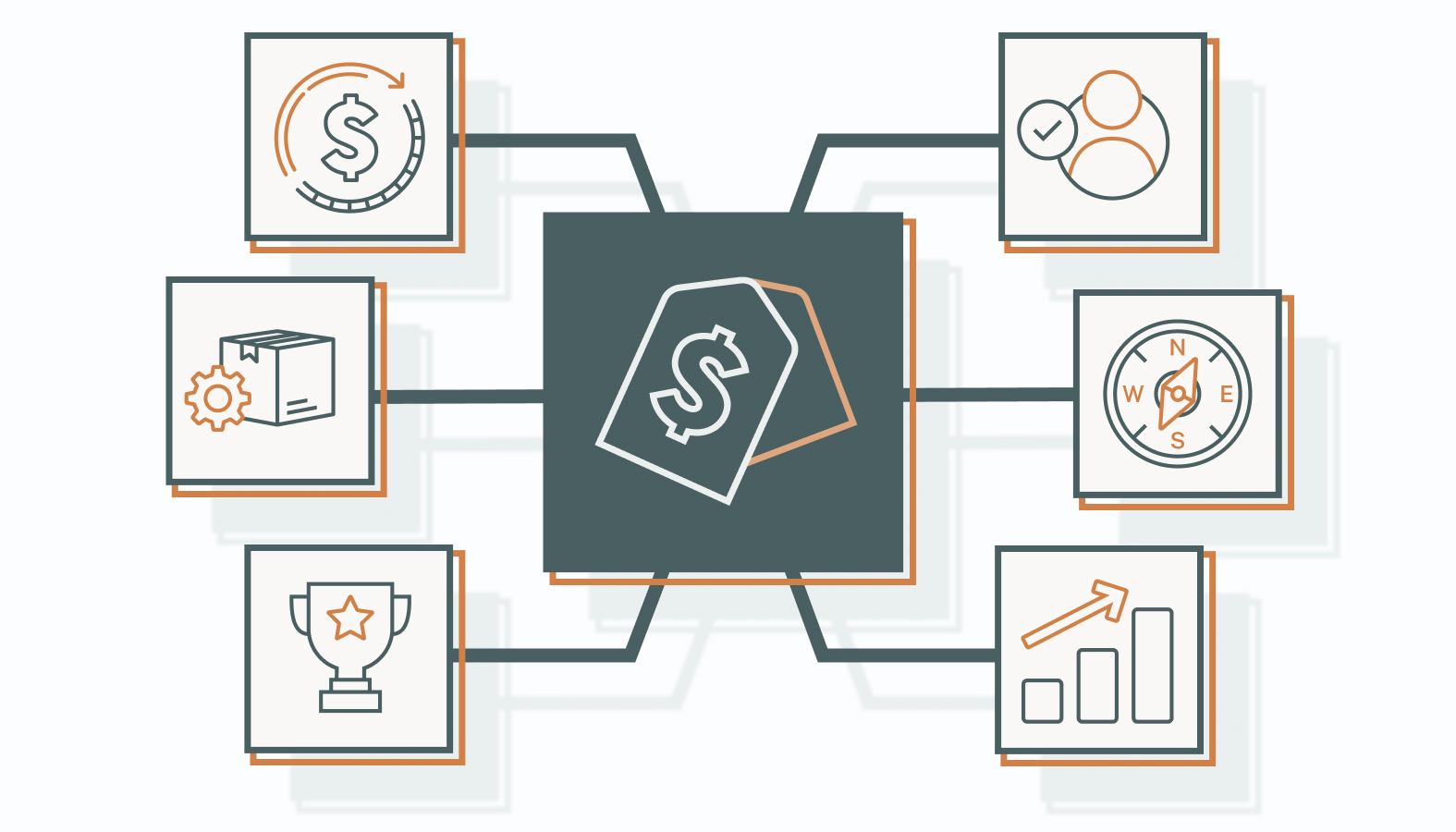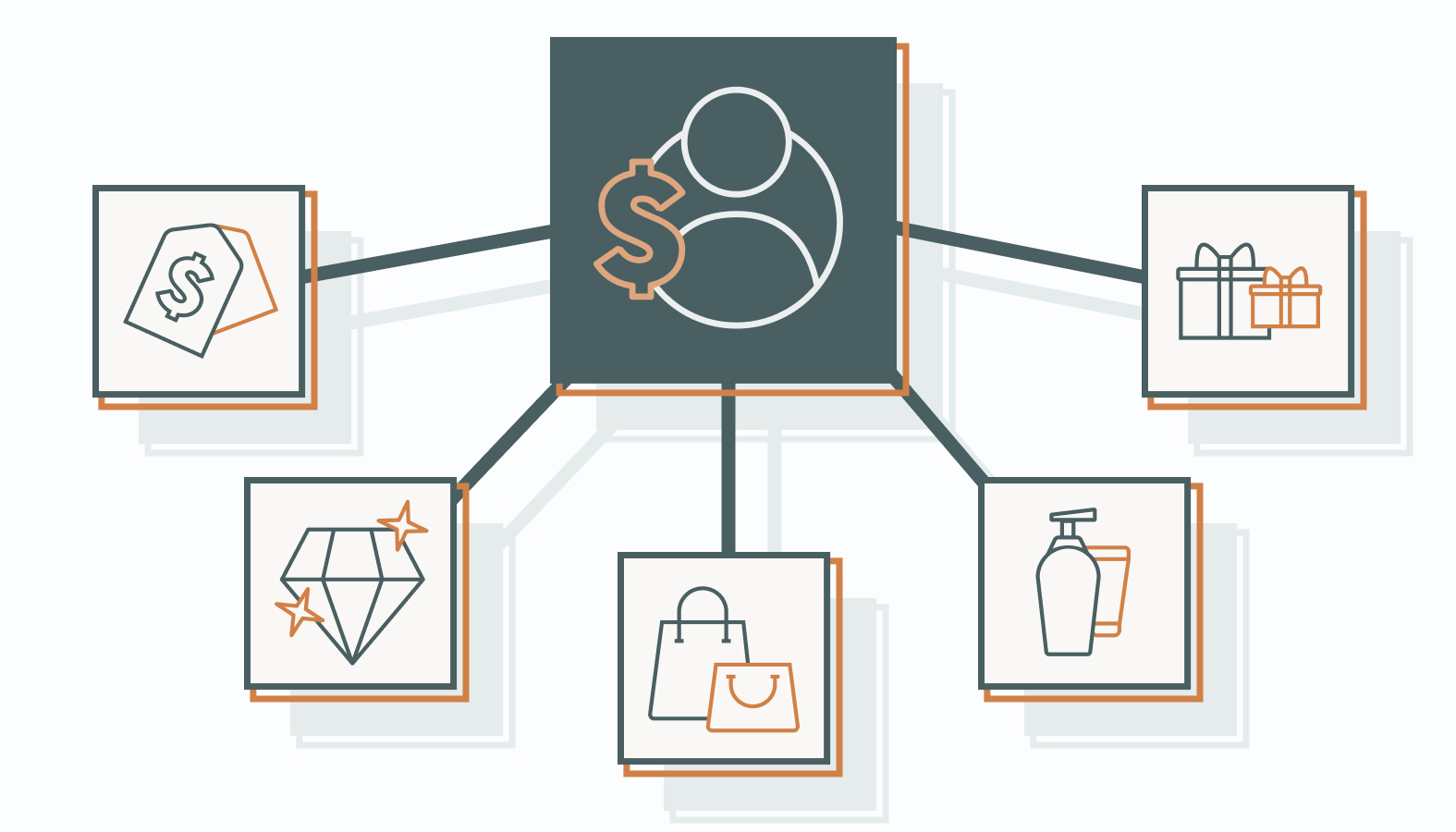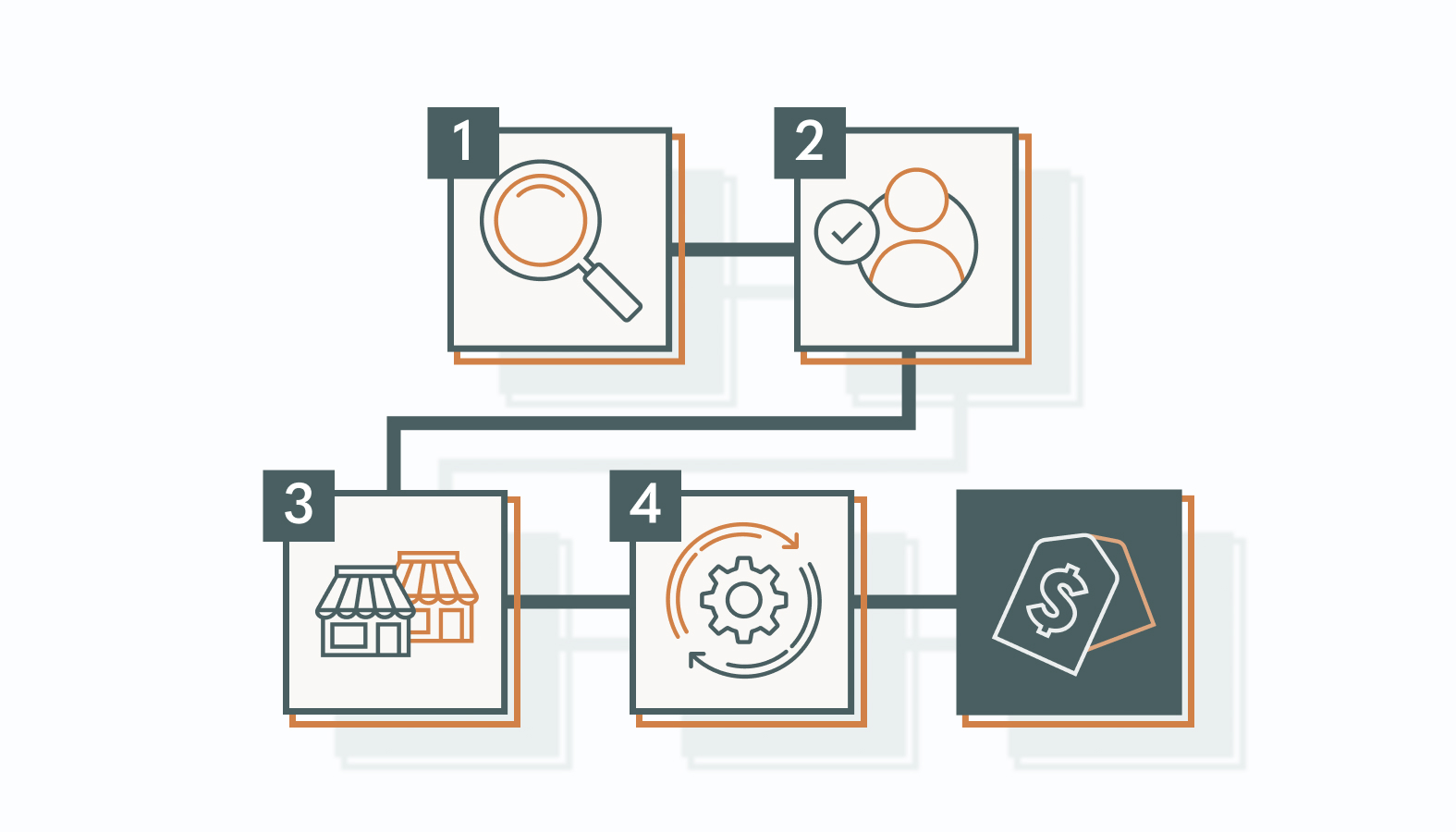Pricing is more than just slapping a number on a product or service. It’s a strategic dance, a delicate balance between what customers are willing to pay and what a business needs to earn. Get it right, and you’ve got a thriving business. Get it wrong, and you could be facing serious challenges.
Many businesses struggle to find the sweet spot in their pricing strategy. They may overprice and lose customers or underprice and sacrifice profits.
A well-crafted pricing strategy can make or break a business. By understanding consumer behavior and market competition, businesses can optimize their pricing to boost profits and customer satisfaction. Let’s explore practical strategies for achieving this.
Importance of a Well-Designed Pricing Strategy
A well-designed pricing strategy helps businesses navigate market demands, optimize profitability, and drive sustainable growth.
By aligning pricing with overall business goals, companies can strike the perfect balance between profit margins and customer expectations. Here’s how:
Enhancing Perceived Value
Strategic pricing is more than just setting a price; it’s about shaping perceptions.
Businesses can elevate their offerings and make them more appealing to customers by using techniques such as:
- Premium pricing (charging a higher price to signal superior quality),
- Bundling (offering a package deal at a reduced price) and
- Tiered pricing (providing options at different price points).
These strategies work by tapping into consumer psychology and offering value in different ways. Whether it’s suggesting superior quality through higher prices or providing flexible options to cater to diverse needs, a well-executed pricing strategy can significantly impact a business’s bottom line.
Establishing Market Positioning
Price can be a powerful tool for shaping your brand’s image.
If they set prices strategically, businesses can position themselves in the market as luxury brands, affordable options, or something in between.
To do this effectively, it’s crucial to analyze competitors’ pricing strategies and identify opportunities to differentiate your brand.
Here are three examples of how pricing can shape a brand’s image:
- Luxury Branding: Brands like Rolex and Gucci use high prices to signal exclusivity and superior quality. These brands invest heavily in their image, using premium materials and craftsmanship to justify their high price points.
- Value Branding: Retailers like Walmart and Target position themselves as affordable options by offering low prices on everyday items. This strategy attracts price-conscious consumers and builds a reputation for value.
- Niche Branding: Companies like Tesla and Dyson often price their products at a premium to differentiate themselves from competitors. This strategy positions them as innovative and cutting-edge brands, attracting a specific target audience willing to pay a premium for unique features and technology.
Maximizing Profitability
While keeping customers happy is a must, a business must also keep its bottom line in check.
Here are three strategies to maximize long-term profitability:
- Price discrimination involves charging different prices to different customer segments based on their willingness to pay.
Movie theaters often offer discounted tickets to students and seniors.
- Dynamic pricing is a technique that allows businesses to adjust prices in real time based on demand and supply.
Airlines, hotels, and other hospitality-industry companies frequently change prices based on season, booking time, and room or seat availability.
- Value-based pricing involves setting prices based on the customer’s perceived product or service value.
Luxury brands often charge premium prices to signal high quality and exclusivity.
Meeting Client Expectations
Understanding your clients’ needs and preferences should be a significant consideration when crafting a pricing strategy that exceeds expectations.
Here are some practical ways businesses can understand their audience:
- Surveys and Questionnaires: Create simple surveys or questionnaires to gather feedback on product quality, pricing, and customer service. Distribute them via email, social media, or in-store.
- Customer Reviews and Testimonials: Encourage customers to leave reviews on platforms like Google, Yelp, or your website. Analyze these reviews to identify areas for improvement and positive aspects to highlight.
- Social Media Listening: Monitor social media platforms to track brand mentions and customer feedback. Use tools to analyze sentiment and identify common themes.
- Customer Interviews: Conduct one-on-one interviews with customers to gain deeper insights into their preferences and pain points.
- Market Research: Use online tools like Google Trends and social media analytics to track industry trends and consumer behavior.
By incorporating these strategies, you can gain valuable insights to refine your pricing strategy and better serve your customers.
Most Common Pricing Models in Business
A well-crafted pricing strategy is essential for a business’s success. It influences revenue, customer perception, and market positioning.
Here are some of the most common pricing strategies:
Cost-Based Pricing
This is a straightforward approach. Businesses calculate the total cost of producing a product or service, including direct costs (raw materials, labor) and indirect costs (overhead, marketing). A markup percentage is added to this cost to determine the selling price.
An excellent example of this is how bakeries operate. They calculate the cost of ingredients, labor, and overhead for a loaf of bread. They add a 20% markup to determine the selling price.
Key considerations:
- Accurate cost calculation: To avoid underpricing, estimate all costs accurately.
- Market perception: While cost-based pricing is simple, it may not account for market demand or competitive pressures.
Value-Based Pricing
Value-based pricing focuses on the perceived value of a product or service to the customer.
Rather than solely considering production costs, businesses set prices based on the benefits, solutions, and unique selling points offered.
This strategy allows businesses to charge premium prices for products or services that deliver exceptional value to customers.
For example, a high-end smartphone manufacturer may charge a premium price due to its innovative features, brand reputation, and exclusive customer service.
Key considerations:
- Customer perception: Understanding customer needs and preferences is essential to assess perceived value accurately.
- Effective communication: Clearly communicating the unique value proposition can justify higher prices.
Competitor-Based Pricing
This strategy involves setting prices relative to competitors’ offerings.
Businesses may choose to price slightly below, at, or above competitors’ prices, depending on their positioning and value proposition.
For instance, a new restaurant may price its dishes slightly below established competitors to attract customers and gain market share. Conversely, a well-established brand with a strong reputation may price its offerings at a premium to signal superior quality and exclusivity.
Key considerations:
- Competitive analysis: A thorough understanding of competitors’ pricing, product offerings, and target market is crucial.
- Differentiation: To justify premium pricing, businesses must offer unique value propositions.
Psychological Pricing
Psychological pricing leverages psychological principles to influence consumer behavior. Here are some common techniques:
- Odd-Even Pricing: Pricing items just below a round figure (e.g., $9.99 instead of $10) can create a perception of a bargain. This subtle price reduction can subconsciously trigger impulse purchases.
- Premium Pricing: Setting high prices to signal high quality and exclusivity. Luxury brands often use this strategy to create a perception of superior value and attract discerning customers.
- Price Bundling: Grouping products or services together to offer a discount. For instance, a fast-food restaurant may offer a meal deal that includes a burger, fries, and a drink at a reduced price.
In addition to these well-known pricing techniques, there are other advanced pricing strategies, such as dynamic pricing or price skimming, which we’ll discuss below.
Implementing Forward-Thinking Pricing Strategies
Businesses must continually adapt their pricing strategies to stay competitive.
As market trends shift, consumer behavior evolves, and technological advancements unfold, the following pricing strategies could prove beneficial.
Adapting to Dynamic Pricing Techniques
Dynamic pricing is a game-changer that allows businesses to adjust their prices in real-time, responding to market changes as they occur.
Revenue Optimization
Dynamic pricing empowers businesses to maximize revenue by aligning prices with real-time demand.
During peak periods, prices can be strategically increased to capitalize on higher demand, while discounts can stimulate sales during slower periods.
- Example: This approach is widely used in industries like airlines and e-commerce, where companies such as Amazon and Uber have successfully optimized their revenues by dynamically adjusting prices based on demand fluctuations.
- Best practice: Even smaller businesses can implement dynamic pricing by offering time-sensitive discounts or promotions based on factors like inventory levels, seasonal trends, or competitor activity.
Enhanced Inventory Management
Dynamic pricing can also optimize inventory management.
Businesses can maintain optimal inventory turnover by adjusting prices to incentivize the purchase of overstocked items.
Conversely, when inventory is low, prices can be increased to slow down sales, ensuring product availability.
Businesses can use sales data and forecasts to make informed pricing adjustments, balancing supply with demand effectively.
- Example: Clothing retailers usually offer discounts on last season’s styles to clear inventory while increasing prices on popular new arrivals to maximize revenue.
- Best practice: Companies with products should monitor inventory levels closely and adjust prices accordingly to prevent stockouts or excess inventory.
Increased Competitive Edge
Staying competitive means knowing and responding to your competitors’ pricing strategies in real time.
Dynamic pricing allows businesses to maintain a competitive edge by quickly adjusting their prices in response to market conditions and competitor moves.
Leveraging tools like pricing software and analytics facilitates effective monitoring, enabling businesses to react swiftly and maintain their market position.
- Example: A restaurant might adjust its menu prices based on competitors’ promotions or changes in local ingredient costs.
- Best practice: Regularly monitor your competitors’ pricing strategies and analyze market trends to identify opportunities for price adjustments.
Improved Customer Insights
Dynamic pricing can also be a goldmine for gathering valuable customer insights.
Businesses can better understand their target audience by analyzing purchasing behaviors and preferences.
This data can then be used to tailor marketing efforts, personalize customer experiences, and refine pricing models, ensuring they are aligned with customer expectations and market demands.
- Example: An online retailer can use dynamic pricing to test different price points and analyze how they impact sales and customer behavior.
- Best practice: The best way to implement this is to use customer feedback and surveys to directly gather insights into their pricing preferences and willingness to pay.
Adaptability to Market Changes
The flexibility of dynamic pricing is invaluable for navigating market fluctuations, economic shifts, and external events impacting supply and demand.
Businesses can swiftly adapt their pricing strategies to capitalize on sudden market opportunities or mitigate risks during downturns.
For instance, during sudden spikes in demand, like a new product launch or a market resurgence post-recession, dynamic pricing can help capture additional revenue.
- Example: a local hardware store can implement dynamic pricing by adjusting prices based on seasonal demand and inventory levels. During peak construction seasons, they can increase prices on popular items like lumber and paint.
Conversely, they can offer discounts during slower periods to stimulate demand and clear out excess inventory.
- Best practice: To leverage this technique, regularly monitor market trends and economic indicators. This data will help you identify potential opportunities and challenges that may impact pricing decisions.
Profit Maximization
Dynamic pricing maximizes profit by aligning price points with customers’ willingness to pay.
By optimizing margins without sacrificing demand, businesses can achieve long-term success.
Key strategies for setting optimal price points include understanding the elasticity of demand and continuously monitoring market feedback to balance profitability and customer satisfaction.
- Example: A software company can offer tiered pricing plans with varying features and price points to cater to different customer segments.
- Best practice: Regularly analyze sales data to identify the price points that generate the highest profit margins.
Strategizing with Penetration and Skimming Approaches
Penetration and skimming are two strategic pricing techniques used at different stages of a product lifecycle or market entry.
Penetration Pricing involves setting a low initial price to gain market share quickly. It’s often used in highly competitive markets to attract price-sensitive customers and discourage competitors from entering.
Examples:
- A new smartphone manufacturer might offer a lower price for its initial model to gain market share and establish brand recognition.
- A new streaming service might offer a free trial or discounted subscription to attract new subscribers and build a customer base.
Skimming Pricing involves starting with a high price that gradually decreases over time as the product matures. It’s often used for innovative products or those perceived as premium. Early adopters willing to pay a premium for the latest technology or trend usually drive initial sales.
Examples:
- A gaming console manufacturer might initially set a high price for its latest console, then gradually reduce it as the product matures and competition increases.
- A pharmaceutical company might initially charge a high price for a new, life-saving drug and gradually reduce it as generic alternatives become available.
It’s essential to choose the right pricing strategy for each situation and adjust it as market conditions change.
Leveraging Consumer Behavior with Psychological Pricing
Understanding consumer psychology is a powerful tool for businesses to optimize pricing strategies.
Businesses can influence purchasing decisions and drive revenue by employing techniques that tap into human behavior. Here are some common methods:
Charm Pricing
Charm pricing relies on the left-digit effect, where prices ending in .99 are perceived as significantly lower than rounded figures.
This technique is widely used in retail and online marketplaces, making prices appear more attractive and encouraging impulse purchases.
Prestige Pricing
Prestige pricing creates an aura of exclusivity and high quality, attracting consumers who equate higher prices with superior products or services.
Luxury brands like Rolex and Gucci use prestige pricing to signal exclusivity and charge premium prices for their products.
Price Anchoring
Price anchoring sets consumer expectations by comparing a product to a higher-priced option, making the target item appear more attractive.
This technique is used in subscription services and retail environments to influence customer choices. For example, retailers often display a high-priced product next to a lower-priced one. The higher price acts as an anchor, making the lower-priced item seem like a better deal.
Bundling
Bundling involves offering multiple products or services together at a single, often discounted, price.
This technique enhances perceived value, encourages higher average order value, and simplifies customer decision-making by presenting a unified offering.
A software company might offer a bundle that includes a basic version of their software, premium features, and priority customer support at a discounted price compared to purchasing each item separately.
Buy One, Get One (BOGO)
BOGO promotions appeal to consumers by offering perceived savings or added benefits, effectively boosting sales during promotions. This strategy is most effective in seasonal sales or inventory clearance events.
A gym might offer a BOGO promotion on annual memberships to attract new members and retain existing ones.
Expanding Reach with Geographic and Freemium Pricing
Geographic and freemium pricing strategies can help businesses expand their reach and maximize revenue.
Geographic Pricing is a concept in which prices are adjusted based on regional factors, such as labor costs, taxes, and shipping fees.
- Example: A software company might charge higher prices for its products in developed countries than in emerging markets.
- Best Practice: Conduct thorough market research to understand regional differences in purchasing power and preferences.
Freemium models involve offering basic services for free to attract customers and then upselling premium features.
- Example: A music streaming service might offer a free tier with limited features and then charge a monthly fee for premium features like ad-free listening and high-quality audio.
- Best Practice: Clearly communicate the value proposition of premium features to encourage upgrades.
Best Practices for Selecting a Pricing Model
Choosing the right pricing model requires careful consideration of internal and external factors to ensure alignment with market demands and strategic goals. Here are tried-and-tested tips for deciding:
1) Evaluating Your Business’s Strengths and Weaknesses
Conduct a SWOT (Strengths, Weaknesses, Opportunities, and Threats) analysis to assess your business’s internal capabilities. This analysis will help you identify your strengths and weaknesses.
For example, if your business excels in premium quality, a value-based pricing model may be ideal to capitalize on this attribute.
2) Identifying and Meeting Client Needs
To create a successful pricing model, you must deeply understand your clients’ needs, preferences, and pain points.
Conduct research and use strategies like surveys and interviews to gather actionable insights.
Tailor your pricing strategy to meet their expectations, fostering customer satisfaction and loyalty.
3) Analyzing Competitors and Market Trends
Understand your competitors’ pricing strategies and market trends.
Conduct market research, benchmarking, and competitor analysis to identify opportunities and gaps. This will help you position your business effectively and capitalize on market trends.
4) Testing and Refining Your Pricing Strategy
Before a full-scale launch, test your pricing strategy through pilot programs or A/B testing.
Analyze the results and gather customer feedback to refine your approach. This iterative process ensures your pricing strategy aligns with business goals and market conditions.
Elevating Your Pricing Strategy for Competitive Advantage
The art of pricing is a delicate balance of science and strategy.
As we’ve explored the intricacies of pricing models, it’s clear that a well-crafted pricing strategy is the cornerstone of a successful business. It’s not just about numbers; it’s about understanding your customers, market, and unique value proposition.
Remember, pricing isn’t static. It’s a dynamic tool that must evolve with your business and the market. You can optimize revenue, build customer loyalty, continuously monitor trends, analyze data, adapt your strategies, and gain a competitive edge.
So, as you embark on your pricing journey, keep these fundamental principles in mind:
- Know Your Customer: Understand their needs, preferences, and willingness to pay.
- Analyze Your Competition: Stay informed about competitor pricing and positioning.
- Test and Learn: Experiment with different pricing strategies to find what works best.
- Adapt and Evolve: Be flexible and ready to adjust your pricing strategy as market conditions change.
By mastering the art of pricing, you can unlock your business’s full potential and achieve sustainable growth.










